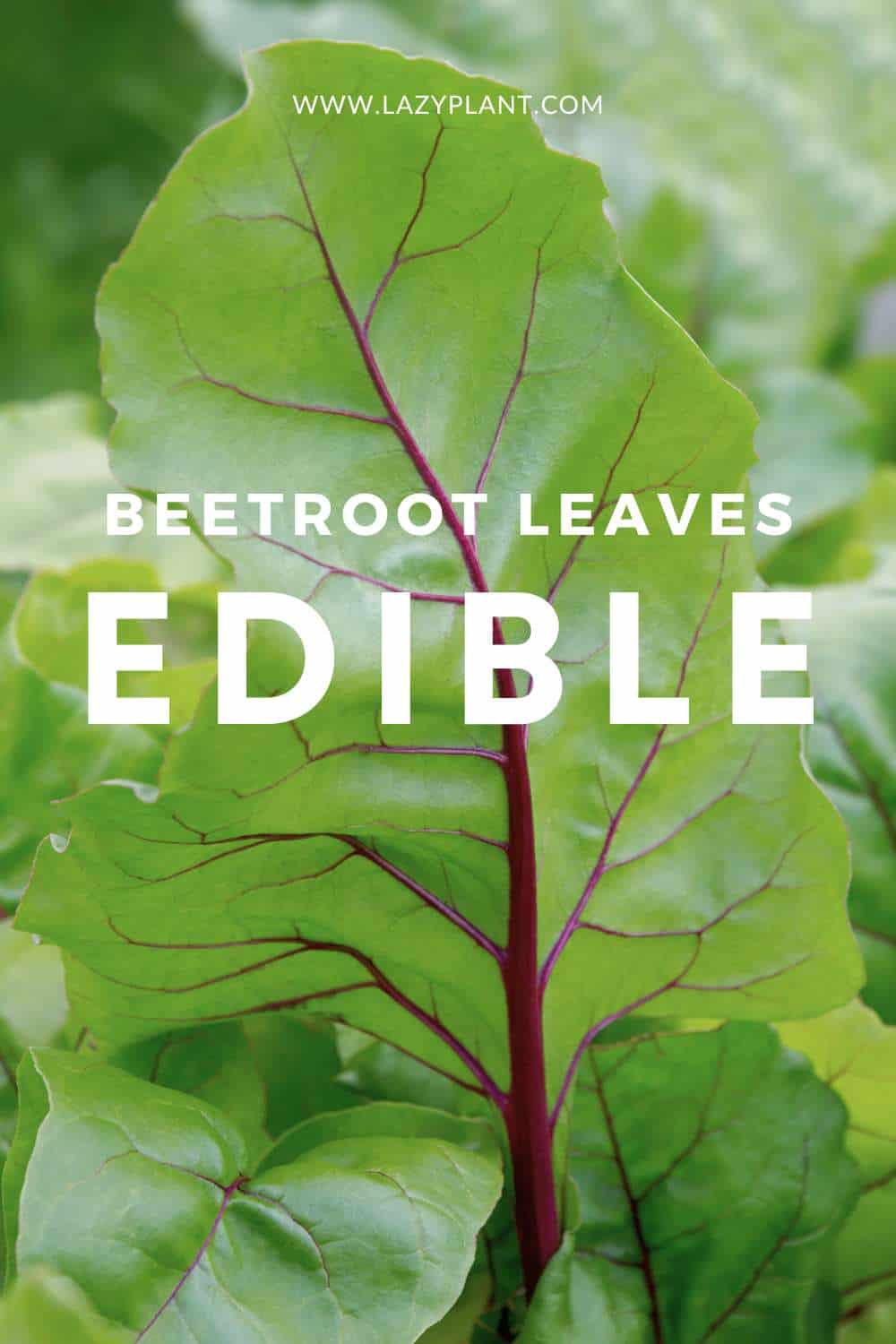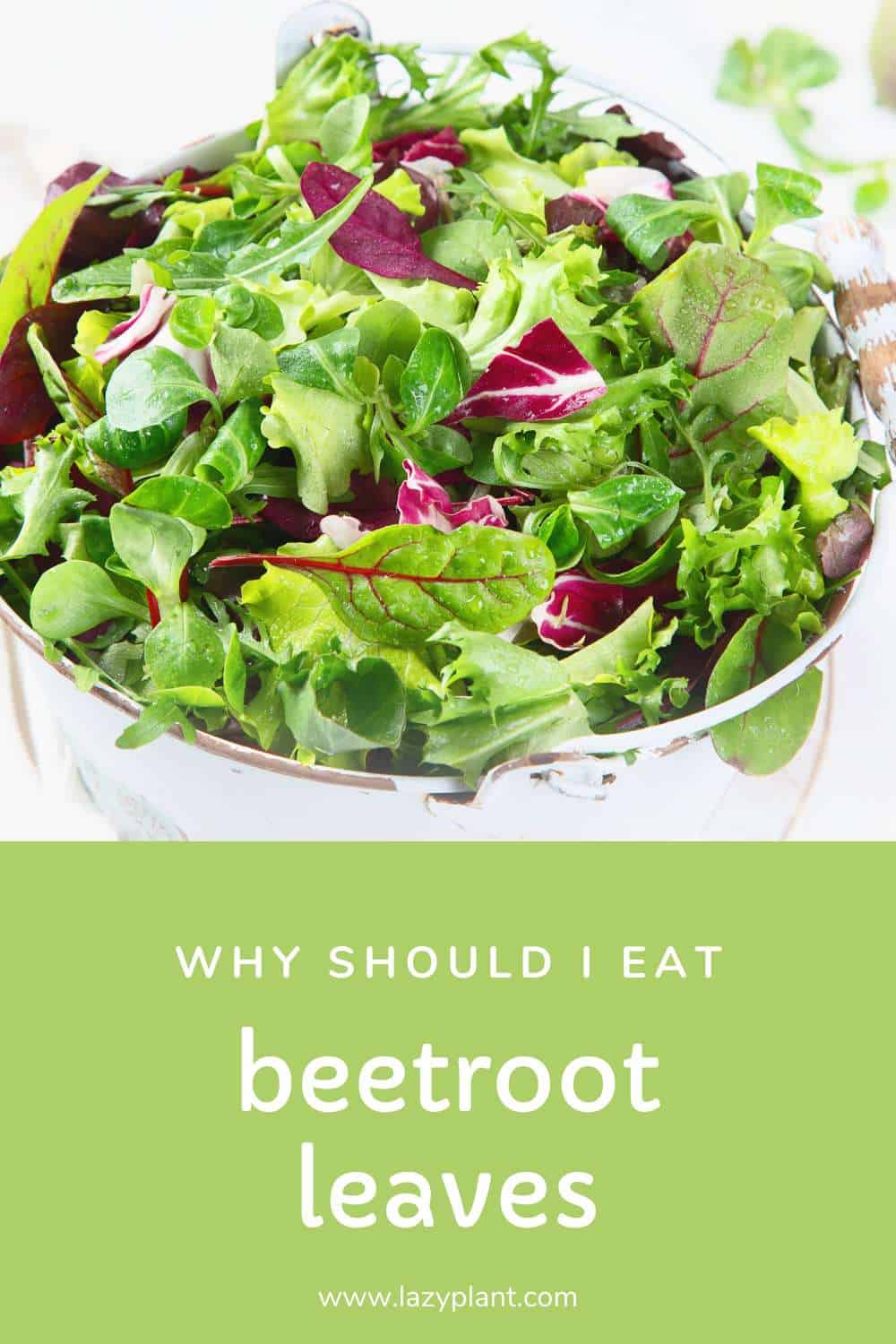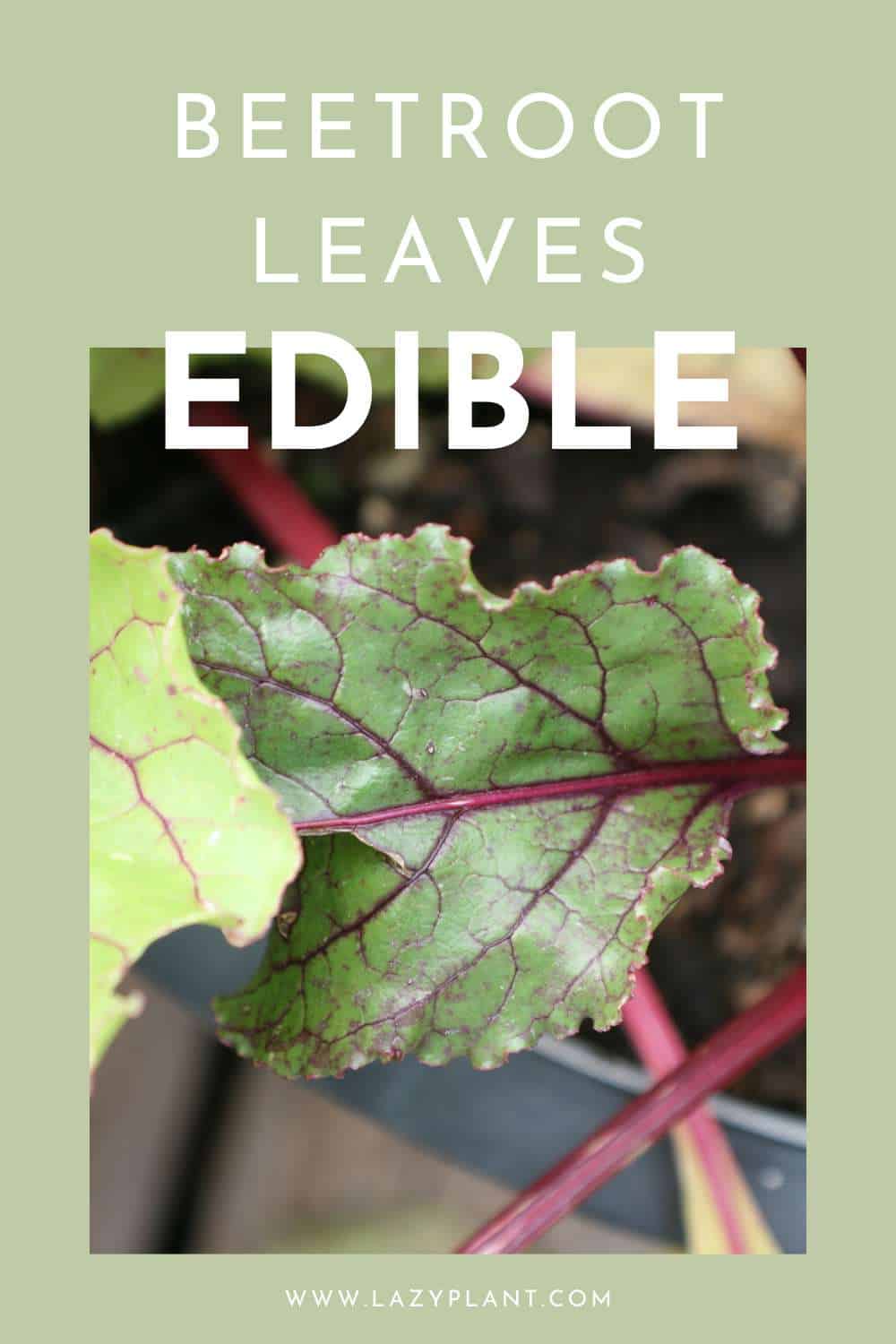Not only are beetroot leaves edible, but also they have a great nutritional value. We can eat them cooked in soups or pies, or raw in salads, smoothies, or sandwiches.
Can you eat beet leaves?
Actually, beetroot leaves are edible. They aren’t poisonous. We can eat them either raw or cooked.

Why should I eat beet greens?
Beetroot leaves are rich in polyphenols. These potent antioxidant compounds can prevent chronic low-grade inflammation, which may cause obesity and other degenerative diseases.
Additionally, beetroot leaves are among the richest foods in carotenoids.
Moreover, beetroot leaves are low in calories, but high in fiber, vitamins, and minerals.[1]
Beetroot leaves are particularly rich in iron. Actually, the leaves have 3 times more iron than the beetroot.
Also, beetroot leaves have less sugar than the beetroot.
May protect the heart
Last, but not least, beetroots protect the heart and promote athletic performance, as they’re naturally high in nitric oxide. Nitric oxide plays a crucial role in the normal endothelial function.[2]
Endothelium refers to the thin layer of cells that lines the interior surface of blood vessels, including arteries, veins, and capillaries. These endothelial cells play a key role in maintaining vascular health.
How to cook beetroot leaves?
You better avoid boiling beetroot leaves, as nutrients will leach into the water. It’s preferable to steam beetroot leaves.
Trim off the tough stems at the base of the leaves. Eat only the tender part. You can use a knife or simply fold the leaves in half and tear the stems away.

Moreover, you can chop the beetroot leaves into bite-sized pieces or leave them whole, depending on your preference or recipe.
Sautéd beetroot leaves taste great as well. You can add minced garlic to the hot oil or butter.
You can sprinkle your cooked or raw beetroot leaves with some lemon juice and olive oil. The vitamin C of lemon juice enhances iron absorption, while olive oil enhances the absorption of carotenoids.
Can you eat beetroot leaves raw?
Yes, we can enjoy raw beetroot leaves. They aren’t poisonous. Actually, no part of the beetroot plant is poisonous.
We can add ear beetroot leaves to smoothies, salads, or sandwiches. They can be a great substitute for lettuce or spinach in many recipes.
What’s the best time to eat beetroot leaves?
You can incorporate beetroot leaves into your diet at any time that suits your eating habits.
However, the best time of the day to consume them for weight loss is before a high-calorie meal. They control total energy intake, as beetroot leaves reduce hunger with only a few calories.
